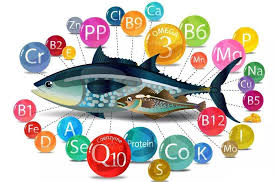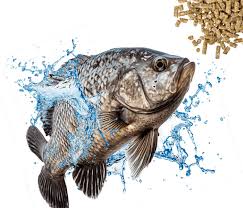Fish Nutrition is the science that interprets the interaction of protein, lipids, energy, vitamins, minerals, and other substances in food in relation to growth, reproduction, health, disease, and other normal physiological functions of fish.
Proximate Analysis in Fish Nutrition
Proximate Analysis is a partitioning of compounds in a feed into six categories based on the chemical properties of the compounds. It is important to remember that proximate analysis is not a nutrient analysis but a partitioning of both nutrients and non-nutrients into categories based on common chemical properties.
Determining Moisture and Ash Content in Fish Feed
The moisture content is determined as the loss in weight that results from drying a known weight of food to a constant weight at 100°C. The ash content is determined by ignition of a known weight of the food at 550°C until all carbon has been removed.
Crude Protein, Ether Extract, and Carbohydrate Fractions in Fish Feed
The crude protein (CP) content is calculated from the nitrogen content of the food, determined by a modification of a technique originally devised by Kjeldahl over 100 years ago. The ether extract (EE) fraction is determined by subjecting the food to a continuous extraction with petroleum ether for a defined period. The carbohydrate of the food is contained in two fractions, the crude fibre (CF) and the nitrogen-free extractives (NFE).
Determination of Calorific Value of Fish Feed (Bomb Calorimetry)
A bomb calorimeter is used to measure the heat created by a sample burned under an oxygen atmosphere in a closed vessel (bomb), which is surrounded by water under controlled conditions. About 1g of solid or liquid matter (food) is weighed in a crucible and placed inside a stainless-steel container (the “decomposition vessel”) filled with 30 bar (435 psi) of oxygen.
The sample is ignited through a cotton thread connected to an ignition wire inside the decomposition vessel and combusted. After calibrating the decomposition vessel with a substance of known heat, the amount of heat required to heat the water by 1°C is known.
The food is then burned, and the article displays the amount of energy inside the food sample in units of calories, joules (J), or BTU per gram. Some food samples burn better inside the calorimeter than others. This is the physical calorific value.
Read Also: Recommended Volume of Water for Fish Farming on a Concrete Pond
Feed Formulation Using Pearson’s Method

To use Pearson’s Square method for formulating feed, follow these guidelines:
- Subtract the nutrient requirement (middle of square) from the nutrient concentration (on the left of the square) in the feed across the diagonal (top left – middle = bottom right; bottom left – middle = top right). Repeat this for both feeds.
- Convert any negative numbers on the right side of the square to positive. The values on the right side of the square represent the parts of each feed to include in the ration.
- Sum the parts of the two feeds to get the total.
- Divide each part by the total to calculate the percentage of each feed in the ration.
Read Also: Concrete Pond Management: Steps to take before introducing the Fish in the Water
Natural and Manufactured Nutrient Sources for Fish

Foods are defined as natural sources of nutrients produced in the environment, while feeds are natural and manufactured sources of nutrients produced elsewhere and added to the environment.
Nutrients for cultured fish can come from various food sources such as plankton, bacteria, insects, and other fish within the aquaculture ecosystem, as well as organic matter and processed feeds added to the ecosystem. Feed formulation using the Pearson Square method is one of the simplest techniques, focusing primarily on Digestible Crude Protein (DCP) as the most basic feed nutritional requirement.
Do you have any questions, suggestions, or contributions? If so, please feel free to use the comment box below to share your thoughts. We also encourage you to kindly share this information with others who might benefit from it. Since we can’t reach everyone at once, we truly appreciate your help in spreading the word. Thank you so much for your support and for sharing!
Read Also: Adaptive Means of Animals Coping with the Environment

